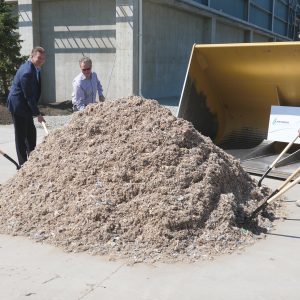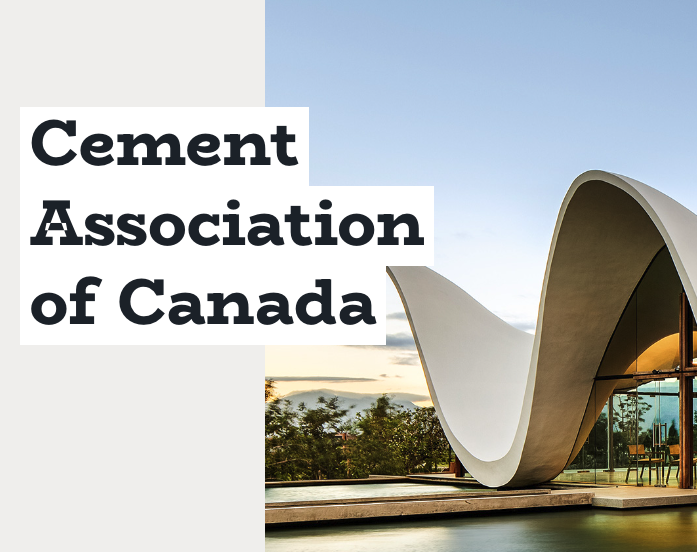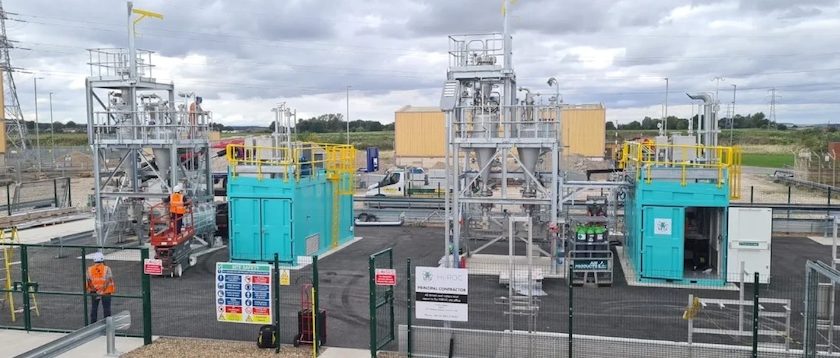Lafarge Canada Inc.’s Richmond, B.C., facility recently launched a new and improved lower carbon fuel (LCF) system to reduce greenhouse gas emissions associated with the production of cement. The initiative aims to make the facility the most carbon efficient cement plant in Canada. It will also help minimize landfill waste; specifically, non-recyclable plastics that are creating a backlog for municipalities across Canada.
 |
| British Columbia Minister of Environment and Climate Change Strategy George Heyman and other dignitaries shovel low carbon fuel mix into a loader during the inauguration of the new LCF system at the Richmond plant. |
The plant is permitted to use lower carbon fuels for 10 years. The new $28 million system, which Lafarge received $14 million in funding support from the British Columbia Ministry of Environment, is expected to replace up to 50% of the plant’s fossil fuel use with lower carbon fuels. Previous upgrades allowed the plant to only achieve 25% substitution. This higher rate of substitution could result in a 20% reduction of combustion emissions.
“Lafarge is aligned with Metro Vancouver’s sustainability goals for recovering energy from landfill-bound solid waste, a classic example of the Circular Economy in action. This new system allows us to more easily reach our target of substituting 50% of our fossil fuel use with lower carbon options. Data from our pilot suggests we can go higher – even up to 70 % is realistic,” explained Plant Manager Pascal Bouchard.
LCF used by the plant is comprised of primarily non-recyclable waste byproducts; waste that does not have an existing or economically viable recycling outlet and is bound for landfills. It allows Lafarge to divert approximately 100,000 tonnes per year of waste from local landfills, the equivalent of about 8,300 loaded garbage trucks.
“With an ever-growing population, using waste as a source of energy is the future of waste management and recycling. It offers superior environmental performance compared to landfill and incineration of waste and significantly reduces greenhouse gas emission from cement production” said Sophie Wu, head of Geocycle North America, LafargeHolcim’s waste management subsidiary.
Further, Inventys announced a project partnership with Lafarge Canada and Total, a major energy company, to develop and demonstrate the first full-cycle solution to capture and reuse CO₂ from a cement plant while also reducing greenhouse gas emissions. Project CO₂MENT will demonstrate and evaluate Inventys’ CO₂ capture system and a selection of CO₂ utilization technologies at the Richmond plant over the next four years.
“At Inventys, we see a real opportunity to build a CO₂ marketplace where tonnes of CO₂ are traded between emitters and users,” said Inventys President and CEO Claude Letourneau. “This project provides an opportunity for global industry leaders to work together using everyone’s expertise to create new business models while fighting climate change.”
The objectives of Project CO₂MENT are as follows:
- Phase I – The Contaminant Program: Reduce harmful organic and inorganic substances, such as sulphur dioxide, dust and soot, as well as nitrogen oxides, from cement flue gas;
- Phase II – The CO₂ Capture Program: Separate the CO₂ from flue gas using a customized-forcement version of Inventys’ carbon capture technology at pilot scale; and
- Phase III – The CO₂ Reuse Program: Prepare post-combustion CO₂ for reuse and support the economical assessment and demonstration of CO₂ conversion technologies onsite, such as CO₂-injected concrete and fly ash.
Funding for the first two phases is complete and development of Phase I is underway. Phase I will begin operation in 2019; followed by Phase II & III in 2020.



